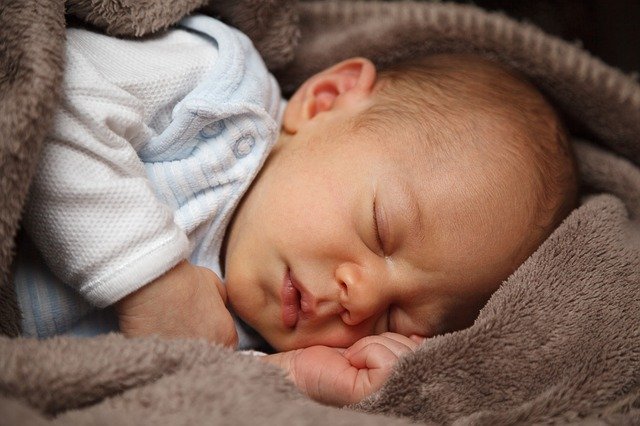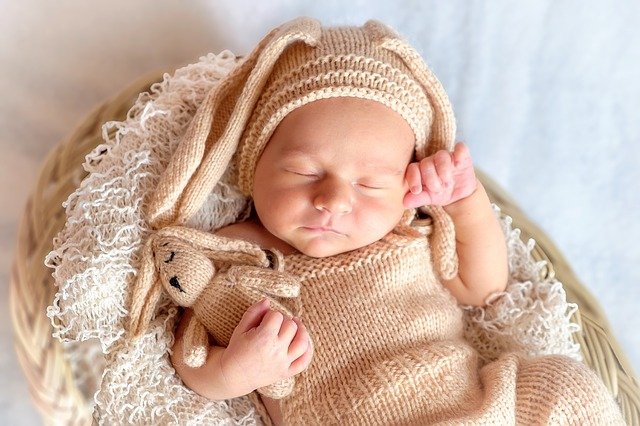 How to Avoid Short Naps
How to Avoid Short Naps
Q: What length of time is considered a “short nap?”
A: Any period of day sleep, lasting less than 60 minutes.
Just about every time I read an intake form, parents report that their child consistently takes naps that last exactly for 20, 30 or 45 minutes. I refer to these as “short naps” (which I qualify to anything less than an hour of day sleep).
Short naps are extremely common early on, (newborn phase, 0-16 weeks) and the length of these naps makes sense, because that is the length of one sleep cycle. This information immediately tells me is that the baby has not yet developed self-soothing skills.
If a child does not know how to transition from one sleep cycle to the next, they will continue to wake up after the first one. It is only until they learn how to self-soothe, that they transfer sleep cycles without outside intervention, (otherwise known as “sleep associations”). If this is the case for your child, work on teaching them how to connect their sleep cycles by eliminating all sleep associations, and by making sure the basic elements of sleep are in place. This will set your baby up for sleep success!
Since that is a lot easier said than done, let’s break this down into steps.
Sleep Association – This is anything external that a baby requires to fall asleep that they cannot re-create on their own (ex: rocking, feeding etc.)
The basic elements of sleep that need to be considered and prepared are:
- The Sleep Environment
- Timing (schedule, and amount of sleep)
- Independent Sleep
Sleep Environment:
When creating a sleep environment that is going to help influence longer stretches of sleep, there are items that are essential to include, and items essential to exclude!
Darkness is CRUCIAL. It is through complete darkness in their sleep environment that their body’s natural melatonin starts to build. I find that some parents are under the impression that the nursery should not be as dark for nap time as it is at night. However, we want it just as dark during the day for naps, especially because the “drive to sleep” is not as strong during the day.
Please note: The only time we would want to experiment with the nursery not being as dark during the day is in the early newborn stage if their days and nights are mixed up. Otherwise, their room should be just as dark during the day, as it is at night.
If you want to explore permanent/affordable blackout shades that Velcro around the windowsill, look into these: http://www.blackoutez.com/aff//idevaffiliate.php?id=134
We also want to eliminate any “distractions” and make sure white noise continuously plays throughout the nap. This is very important because if there is light coming through the sides of the windows, a sudden loud noise, or a mobile hanging from the ceiling, the nap can be disrupted. When your baby wakes up after their first sleep cycle and one of these things catches their attention, it will stimulate them enough to wake them up, ending their nap early.
Essential to include:
- Backout Shades AND Blackout Curtains
- Area for soothing routine
- White Noise Machine
- Temperature between 66-71 degrees
- A fan (for children under 12 months)
Essential to exclude:
- Anything that lights up or plays music
- Anything that glows in the dark or hangs from the ceiling
- Busy patterns, bright/loud colors
- Monitors with red LED lights
- Night light
- Sleep material other than cotton (sheets, pajamas, sleep sacks, etc.)
Common Scenario:
 We lay our child down and then turn on something that instantly catches their attention, stimulates them, and then we are left wondering why our child hasn’t fallen asleep yet. That is why the most important items to exclude from the nursery is anything that would serve as a distraction, (mobiles, light projectors, stuffed animals that sing, anything glowing in the dark).
We lay our child down and then turn on something that instantly catches their attention, stimulates them, and then we are left wondering why our child hasn’t fallen asleep yet. That is why the most important items to exclude from the nursery is anything that would serve as a distraction, (mobiles, light projectors, stuffed animals that sing, anything glowing in the dark).
The issue with these items, is that they are often sold with an implication that they belong in your child sleep environment, (to help them fall asleep) when in fact, they serve as a distraction, preventing your child from falling asleep on their own.
For Example: When I ordered my son’s bedding for his nursery, it included a mobile. As if it was something that should automatically be placed on top of their crib, because that will help them fall asleep, right?
Unfortunately, no. It will not. In fact, the exact opposite is true. Think of it this way, we have just gone through a soothing routine, (signaling the start of bedtime) the room is prepared, you put him in his crib, turn off the lights and send the message that it is time for sleep. However, at the same moment, we are confusing our child; because as we’re leaving the room, we turn on the spinning, glowing, music playing object above their head, (instantly stimulating them) which then sends the contradictory message; that we want them to stay awake.
Always remember, since we can’t communicate with our infants, the only thing we can do is send clear, consistent messages.
I’ll never forget the time I went to a client’s home (who had just turned two years old) and for his birthday his parents put glow in the dark stars all over his entire ceiling! I had to tell the Dad to get a ladder and start taking them down. That wasn’t an easy moment, but no distractions in the sleep environment is essential. When your child is older and has a solid, consistent sleep schedule and routine, adding fun things like that into their room would be perfectly fine! However, until then, they will prohibit us from reaching our goals.
Suggestion: Move your child’s mobile, (and other objects of stimulation) to use at playtime! Hang the mobile above her play mat and let her look at the lights and listen to the music while she plays. These items are great for playtime, not for sleep time.
Independent Sleep:
Many factors contribute to the development of an independent sleep schedule, including timing, removing all sleep associations, (see definition above) and a sleep environment set up to be conducive to healthy sleep. Products are developed and sold for a child’s sleep environment with the idea that they will aide in their ability to sleep. However, the reality is, none of these items or “gimmicks” being sold (and offering parents false hope) will help your child fall asleep.
The only thing that can put your child to sleep, is themselves!
They just need to be taught how.
A strong factor that needs to be present when teaching independent sleep is determining a method that you will use to offer your baby comfort. This will be an important task when it comes to teaching your child to sleep independently. Establishing a sleep training method that you are comfortable with, that meets your parenting style, and that you can implement consistently, allows us as parents to show support and provide comfort, them while they learn to fall asleep on their own.
No. “Cry it Out” is NOT the only option.
Timing:
This last factor will have the biggest influence on teaching your child to sleep independently, which is: the timing of their schedule!
If you already have an independent sleeper and they are short napping, there most likely needs to be a schedule adjustment.
How do I get my child to lengthen their naps? They only sleep for 20, 30, or 45 minutes EXACTLY! Every single time! (Sound familiar?)
Answer: By teaching them how to connect their sleep cycles.
- Connecting sleep cycles = the right timing!
- *When a child takes a nap under an hour and wakes up happy, it means they did not build up enough seep pressure before going to sleep.
- *If they wake crying, and took a long time to fall asleep, they were most likely already tired when you laid them down.
These are the main factors that influence proper timing:
 Sleep Pressure – This refers to the amount of time your child has been awake before their next sleep period. It is important that they are awake long enough (according to their age) and stimulated throughout this time period with light, sound and play. If a child is being put to sleep too close to the last time that they woke, their nap will most likely be short.
Sleep Pressure – This refers to the amount of time your child has been awake before their next sleep period. It is important that they are awake long enough (according to their age) and stimulated throughout this time period with light, sound and play. If a child is being put to sleep too close to the last time that they woke, their nap will most likely be short.
If they are happy before falling asleep for a nap and waking up content, (but after less than an hour of sleep) it is probably time to extend the wake period before that nap.
Overtired – On the other hand, if your child has been kept awake for too long and has reached the overtired state, they (might) fall asleep for the nap, but will likely wake up crying after the first sleep cycle due to the increased levels of cortisol in their body. Those hormones will make it very difficult for them to connect to the next sleep cycle and extend their nap.
If they are crying until they fall asleep, showing sleepy cues before being put down, and wake up crying, it might be appropriate to decrease the wake period before that nap.
To reach our goal of baby taking long and restorative naps consistently throughout the day, all three of these basic elements need to be set up properly and implemented simultaneously.
As a result, you can start to look forward to creating a “Happy Napper!”
How to Create a “Happy Napper”
My Initial thought when hearing the term “happy napper” was a child who was waking up happily from their nap. However, equally as important (and desirable for parents) is a child that is also happy BEFORE they fall asleep. When both aspects are present, we have ourselves a very “Happy Napper!”
Falling Asleep (happily):
In order to accomplish this, we need to control our child’s wake periods before each nap and before bedtime. If we get our timing right, they will be in their crib before becoming tired, and therefore we will have a much better chance at laying them down (awake) without them getting upset.
Our #1 goal is to get our timing on track! Ideally, when your child’s sleep wave approaches and they start yawning and showing other tired signs; they are already in their crib, in their dark room, with white noise playing, and therefore have been set up for success, in the best way we know how!
A big error I see parent make is to wait until their child is showing signs of being tired before getting them ready for their nap or for bedtime. When a baby displays sleepy cues or tired signs, there is a good chance they are already overtired. By the time parents lay them down, they have missed the sleep wave, cortisol production has begun and getting your child to fall asleep will be a hard task.
Waking Up (happily):
 Waking from a nap in what I would consider a “happy” state can mean a few different things. First, I want to be clear that happy qualifies as anytime your baby wakes and does not start crying immediately, so if they open their eyes and look around the room and move around their crib for a few minutes and then start crying, that is classified as a “happy” wake-up.
Waking from a nap in what I would consider a “happy” state can mean a few different things. First, I want to be clear that happy qualifies as anytime your baby wakes and does not start crying immediately, so if they open their eyes and look around the room and move around their crib for a few minutes and then start crying, that is classified as a “happy” wake-up.
If you child is perpetually taking “short naps” it will be rare that they wake happy from them, because their body is stuck in a perpetual overtired state, and they are struggling to catch up. This is when you want to teach your child how to become an independent sleeper in order to establish a solid sleep schedule.
However, if your child already has a solid sleep schedule and has learned self-soothing skills, they could still take a short nap and wake up happy. The reason for this is because they did not build up enough “sleep pressure” before the nap. Extending the wake period before this nap might be necessary if this scenario continues.
How do I get my baby to wake-up happy from their naps?
How do I get my baby to be happy before falling asleep for their naps?
By extending naps, you will inevitably create a happy napper. Therefore, the basic elements of sleep (see above), will tie into all of these answers:
- Teaching your child to fall asleep, and fall back asleep independently is crucial to establishing long, restorative naps that your child wakes from well-rested.
- Well-rested leads to a HAPPY wake-up!
- A Child can’t take long, restorative naps if their nursery is not set up properly.
- If there is an element in their sleep environment that will catch their eye and distract them from sleep, or if the room is not dark enough, they will not be able to transition sleep cycles and will wake up crying.
- On the other hand, a poorly set-up sleep environment with distractions and stimulation can prevent the child from being able to fall asleep for their nap “on-time,” resulting in them reaching the overtired state.
- Overtired = crying before falling asleep, crying upon waking, or no nap at all!
- The Key to establishing a Happy Napper is.. TIMING!
-
-
- If we lay the down too early, they have not built up enough sleep pressure and therefore take their nap, but it will be short.
- If we lay them down too late, they are now overtired and will put up a fight to fall asleep and stay asleep, (if we’re lucky enough to get them to sleep!)
- It all leads back to getting our timing on track!
-
Your Mission: Find a wake period that is not too long, not too short, but just the RIGHT amount of time!
Other factors to consider
10-Minute Wait:
- Try not to rush in their immediately after they wake. Especially if they short napped and woke-up happy, leave them for up to 10-15 minutes and see what happens.
- If they are crying, try leaving them for just a few minutes, and then go and get them.
- Remember, if they are not given the opportunity to extend their nap on their own, they are not going to learn how to do it.
Happily, in their crib:
- Anytime your baby is in their crib and happy, (not yet asleep or having recently woken up) is a great thing!!! We want them to be comfortable and familiar with their sleep environment.
- It is also important to remember that we don’t only want to get our baby from their crib when they are crying, we also want to get them out of their cribs when they are happy. This sends the message that we will always come and get them, so there’s no need to cry until we come!
“Total Wake Time:” is the amount of time a child is awake during the day.
If you think your child is in a perpetual overtired state that is causing them to wake-up crying, consider not only each individual wake period, but their overall amount of sleep for the day. This is referred to as their ‘total wake time.’
If it is too high: They will be perpetually overtired, crying until they fall asleep, not sleeping for long and crying upon waking.
If it is too low: They will take a long time to fall asleep. Most likely crying until they do. It will also result in a short nap that they will probably wake-up happy from, but that happiness might not last if they are not well-rested.
In Summary, we get baby to fall asleep happily, AND wake-up happy by..
- Getting the entire 24-hour schedule on track. Timing is crucial!
- Make sure they build up enough sleep pressure before a nap.
- Make sure they are not overtired before a nap, and that their wake period is appropriate for their age.
- Make sure their sleep environment is pitch black, without distractions and has white noise playing.
- If they have an underdeveloped startle reflex that often wakes them early, put them in a sleep sack.
- If they did not sleep more than an hour, try shortening the following wake period by 15 minutes.
- Consider their ‘total wake time’ and make sure it is not too high or too low.
- Remain Consistent! Remember that the only form of communication we have is to send clear and consistent messages!
How to turn a High Need Baby into a “Happy Napper”
 When it comes to helping a family with a high needs baby establish a healthy sleep schedule and routine, all of the factors listed above still apply (setting up the sleep environment, figuring out the proper wake times) however, when it comes to teaching them to be an independent sleeper” (the way we offer comfort as they learn to put themselves to sleep) is an important decision to make and the options can vary from a non-high needs baby.
When it comes to helping a family with a high needs baby establish a healthy sleep schedule and routine, all of the factors listed above still apply (setting up the sleep environment, figuring out the proper wake times) however, when it comes to teaching them to be an independent sleeper” (the way we offer comfort as they learn to put themselves to sleep) is an important decision to make and the options can vary from a non-high needs baby.
What I have found over the past 9 years (both personally and professionally) is that with a non-high needs baby, the method we chose is more about the parents and what they are comfortable with. However, with our high need babies, the method we pick is more about the child.
Most parents with a high needs child will gravitate towards the slowest, most gradual method, (which I agree that is a good strategy to use). However, sometimes after we begin we find that our presence is more of a distraction rather than a form of comfort, and therefore remaining out of the room or timing intervals to go in and check on them briefly, will work better.
As I mentioned above, the #1 task on the path to creating a happy napper is getting your timing on track! When it comes to a high needs baby, it is even more important, and there is little (if any) room for error.
A distinguishing quality of a high need baby is their sensitivity around sleep. Their circadian rhythms take longer to establish due to the perpetual lack of sleep, and increased levels of crying and discomfort. They struggle to settle down and self-regulate, and therefore are always overtired. This results with high levels of cortisol and low levels of melatonin, leaving the child’s body to learn how to balance those hormones between day and night.
*An extra-long and soothing routine before nap, is helpful to combat this.
No room for error means a very strict nap schedule, that gets adjusted throughout the day, depending on how long they slept, or if they slept at all! This is not ideal for every family, but it will get you to the desired result. If you remain extremely consistent with timing, get rid of your child’s sleep deficit, and reverse the hormone production in their body, your high needs baby will turn into a “happy napper” as well!
In Summary: The same basic elements and all other factors apply for high need babies, as they do for non-high need children. However, since their temperament can be more challenging, we want to do everything in our power to avoid the overtired state!
Some differences/added considerations:
- Details surround timing and schedules and very strict, no room for fluctuation.
- The method is more about the child, versus it being more about the parent.
- Consistency is even more crucial in order to send clear messages.
- It will take longer to see results. Their bodies take longer to learn a habit.
- They have more of a stamina to put up a fight, then a non-high need baby.
- Takes longer to reverse the sleep hormones to produce at the proper time.
- Longer soothing routines are helpful when overtired.
